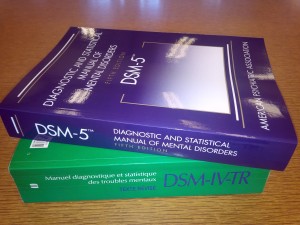- Calls to this hotline are currently being directed to Within Health, Fay or Eating Disorder Solutions
- Representatives are standing by 24/7 to help answer your questions
- All calls are confidential and HIPAA compliant
- There is no obligation or cost to call
- Eating Disorder Hope does not receive any commissions or fees dependent upon which provider you select
- Additional treatment providers are located on our directory or samhsa.gov
BED research: What Do We Know?

Article Contributed By: Chelsea Fielder-Jenks, M.A., LPC-Intern | CFJCounseling.com
 Since Binge Eating Disorder (BED) was first mentioned in the second edition of the Diagnostic and Statistical Manual of Mental Disorders (DSM) in 1987, research on BED has come a long way in a relatively short period of time. In fact, in 2013, BED was added to the latest, fifth edition, of the DSM as its own diagnosis.
Since Binge Eating Disorder (BED) was first mentioned in the second edition of the Diagnostic and Statistical Manual of Mental Disorders (DSM) in 1987, research on BED has come a long way in a relatively short period of time. In fact, in 2013, BED was added to the latest, fifth edition, of the DSM as its own diagnosis.
This is thanks to, in large part, the growing amount of data that validates the disorder.
Thankfully, this body of research continues to grow along with the recognition of BED as a mental disorder. Here’s a recap of what we know so far:
Facts about BED
- The prevalence of BED is estimated to be approximately 1-5% of the general population.
- BED affects women slightly more often than men. Estimates indicate that about 60% of people struggling with binge eating disorder are female, 40% are male.
- Studies that have looked at ethnic differences in BED have not found any significant findings.
- People who struggle with BED can be of normal or heavier than average weight.
- BED is often associated with symptoms of depression. To a lesser degree, BED is associated with anxiety, substance-related disorders, and personality disorders.
- BED is associated with several health consequences, including: high blood pressure, high cholesterol levels, heart disease, diabetes mellitus, sleep apnea, gallbladder disease, and muscle and/or joint pain
- People who struggle with BED report a lower quality of life than those who do not struggle with BED.
What is BED?
- BED is characterized by repeated episodes of uncontrolled overeating, or eating more than the average person would eat in a short period of time.
- Binge eating often includes a feeling of lack of control over what is eaten, how much is eaten, or when and how to stop eating.
- Eating is often used to fill an emotional void or in an attempt to cover up or avoid feelings.
- People struggling with BED often express distress, shame, and guilt over their eating behaviors.
- There are also several behavioral indicators of BED including eating when not hungry, eating alone because of embarrassment over quantities consumed, eating until uncomfortably full.
What causes BED?
 While the exact cause of BED is unknown, there are a variety of factors that are thought to influence the development of this disorder. These factors are:
While the exact cause of BED is unknown, there are a variety of factors that are thought to influence the development of this disorder. These factors are:
- Biological: Twin and family studies estimate the heritability of BED symptoms at 41%-57%. Biological abnormalities, such as brain structure and hormonal irregularities or genetic mutations, which are linked to appetite and satiety, may be associated with compulsive eating and food addiction. Research has also found that binge-eating behaviors are more likely to occur in those individuals genetically predisposed to obesity.
- Psychological: A strong correlation has been established between depression and binge eating. Body dissatisfaction, low self-esteem, and difficulty coping with feelings can also contribute to BED. Many people with binge-eating disorder also have a history of dieting. Dieting may trigger an urge to binge eat, especially if you have low self-esteem and symptoms of depression.
- Social/Environmental: Traumatic experiences, such as a history of physical, sexual, or emotional abuse or emotional neglect, can increase the risk of binge eating. Social pressures to be thin, which are typically influenced through media, can trigger emotional eating. Persons subject to critical comments about their bodies or weight may be especially vulnerable to binge eating disorder. A family environment that is less supportive and cohesive, more controlling and conflict ridden, and less likely to express direct and open feeling may also contribute to BED.
BED Treatment
- Due to the variety of factors that are involved in the cause of BED, it is important that they each be addressed when treating the disorder. This includes, but is not limited to, the following:
-
- Biological: Medical and physical evaluation, laboratory blood/urine testing, nutrition/dietary counseling, medication management, treatment of coexisting medical conditions (diabetes, hypertension, hypo/hyperthyroidism)
- Psychological: Psychotherapy, behavioral therapy, psychiatric assessment, understanding negative emotions, building adaptive coping skills
- Social/Environmental: Identifying environmental triggers, family counseling, addressing stressful life events
- The major goals for treating BED are to reduce binge-eating episodes, improve emotional well-being and then, if necessary, weight-loss.
- Psychotherapy, medications, and behavioral weight-loss treatments are the most common treatments for BED.
- A multidisciplinary team including but not limited to a psychologist, psychiatrist, individual therapist, social worker, nutritionist, and/or primary care physician provides treatment.
- Care should be coordinated and provided by a health professional with expertise and experience in dealing with eating disorders.
- Treatment of BED is delivered in hospitals, residential treatment facilities, and private office settings.
- Levels of care consist of acute short-term inpatient care, partial inpatient care, intensive outpatient care (by day or evening), and outpatient care.
References:
1. American Psychiatric Association. (2013). Diagnostic and statistical manual of mental disorders, 5th ed. (DSM-5). Arlington, VA: American Psychiatric Publishing.
2. American Psychiatric Association (APA). (1994). Diagnostic and statistical manual of mental disorders, 4th ed., text revision (DSM-IV-TR). Washington, DC: American Psychiatric Association.
3. Bulik, C. M., Sullivan, P. F., & Kendler, K. S. (2003). Genetic and environmental contributions to obesity and binge-eating. International Journal of Eating Disorders, 33, 293-298.
4. Dingemans, A.E., Bruna, M.J., & Van Furth, E.F. (2002). Binge eating disorder: a review. International Journal of Obesity, 26, 299-307.
5. Drewnowski, A. (1995). Metabolic determinants of binge-eating. Addictive Behaviors, 20, 733-745.
6. Grilo, C.M., White, M.A., & Masheb, R.M. (2009). DSM-IV Psychiatric disorder comorbidity and its correlates in binge-eating disorder. International Journal of Eating Disorders, 42, 228-234.
7. Hay, P. (1998). The epidemiology of eating disorder behaviors: an Australian community based survey. International Journal of Eating Disorders, 23, 371-382.
8. Heatherton, T.F. & Baumeister, R.F. (1991). Binge eating as escape from self-awareness. Psychological Bulletin, 110, 86-110.
9. Hodges, E.L., Cochrane, C.E., & Brewerton, T.D. (1998). Family characteristics of binge-eating disorder patients. International Journal of Eating Disorders, 23, 145-151.
10. Hudson, J. I., Hiripi, E., Pope, H. G., Jr., & Kessler, R. C. (2007). The prevalence and correlates of eating disorders in the national comorbidity survey replication. Biological Psychiatry, 61, 348-358.
11. Javaras, K.N., Laird, N.M., Reichborn-Kjennerud, T.R., Bulik, C.M., Pope, H.G., & Hudson, J. (2008). Familiality and heritability of binge-eating disorder: Results of a case-control family study and a twin study. International Journal of Eating Disorders, 41, 174-179.
12. Kinzl, J. F., Traweger, C., Trefalt, E., Mangweth, B., & Biebl, W. (1999). Binge eating disorder in males: A population-based investigation. Eating and Weight Disorders, 4, 169-174.
13. Lewinsohn, P. M., Seeley, J. R., Moerk, K. C., & Striegel-Moore, R. H. (2002). Gender differences in eating disorder symptoms in young adults. International Journal of Eating Disorders, 32, 426-440.
14. Manwaring, J.L., Hilbert, A., Wilfley, D.E., Pike, K.M., Fairburn, C.G., Dohm, F., & Striegel-Moore, R.H. (2006). Risk factors and patterns of onset in binge-eating disorder. International Journal of Eating Disorders, 39, 101-107.
15. Mathes, W.F., Brownley, K.A., Mo, X., Bulik, C.M. (2009). The biology of binge-eating. Appetite,52, 545-553.
16. Munsch, S., Biedert, E., Meyer, A., Michael, T., Schlup, B., Tuch, A., & Margraf, J. (2007). A randomized comparison of cognitive behavioral therapy and behavioral weight-loss treatment for overweight individuals with binge-eating disorder. International Journal of Eating Disorders, 40, 102-113.
17. National Eating Disorder Association. Learn – Binge Eating Disorder. Retrieved July 26, 2013 from http://www.nationaleatingdisorders.org/binge-eating-disorder
18. Polivy, J., & Herman, C.P. (1985). Dieting and binging: A causal analysis. American Psychologist, 40, 193-201.
19. Ramacciotti, C.E., Coli, E., Passaglia, C., Lacorte M., Pea, E., & Dell’Osso, L. (2000). Binge eating disorder: prevalence and psychopathological features in a clinical sample of obese people in Italy. Psychiatry Research, 94, 131-138.
20. Reagan, P., & Hersch, J. (2005). Influence of race, gender, and socioeconomic status on binge eating frequency in a population-based sample. International Journal of Eating Disorders, 38, 252-256.
21. Reas, D.L. & Grilo, C.G. (2007) Timing and sequence of the onset of overweight, dieting, and binge-eating in overweight patients with binge-eating disorder. International Journal of Eating Disorders, 40, 165-170.
22. Reichborn-Kjennerud, T., Bulik, C. M., Tambs, K., & Harris, J.R. (2004). Genetic and environmental influences on binge-eating in the absence of compensatory behaviors: A population-based twin study. International Journal of Eating Disorders, 36, 307-314.
23. Ricca, V., Mannucci, E., Moretti, S., Di Bernardo, M., Zucchi, T., Cabras, P.L., & Rotella, C.M. (2000). Screening for binge-eating disorder in obese outpatients. Comprehensive Psychiatry, 41, 111-115.
24. Smith, D. E., Marcus, M. D., & Kaye, W. (1992) Cognitive-behavioral treatment of obese binge eaters. International Journal of Eating Disorders, 12, 257-262.
25. Smith, D. E., Marcus, M. D., Lewis, C. E., Fitzgibbon, M., & Schreiner, P. (1998). Prevalence of binge-eating disorder, obesity, and depression in a biracial cohort of young adults. Annals of Behavioral Medicine, 20, 227-232.
26. Spitzer, R.I., Devlin, M., Walsh, B.T., Hasin, D., Wing, R., Marcus, M.D., Stunkard, A., Wadden, T., Yanovski, S., Agras, W.S., Mitchell, J., & Nonas, C. (1992). Binge eating disorder: a multiside field trial of the diagnostic criteria. International Journal of Eating Disorders, 11, 191-203.
27. Spitzer, R.I., Yanovski, S., Wadden, T., & Wing, R. (1993). Binge eating disorder: its further validation in a multisite study. International Journal of Eating Disorders, 13, 137-153.
28. Striegel-Moore, R. H., Wilfley, D. E., Pike, K. M., Dohm, F. A., & Fairburn, C. G. (2000). Recurrent binge-eating in Black American women. Archives of Family Medicine, 9, 83-87.
29. Wilfley, D.E., Agras, W.S., Telch, C.F., Rossiter, E.M., Schneider, J.A., Cole, A.G., Sifford, L., & Raeburn, S.D. (1993). Group cognitive-behavioral therapy and group interpersonal psychotherapy for the nonpurging bulimic individual: A controlled comparison. Journal of Consulting and Clinical Psychology, 61, 296-305.
30. Williamson, D.A., Zucker, N.L., Martin, C.K., & Smeets, M.A.M. (2004). Etiology and management of eating disorders. In H.E. Adams, & P.B. Sutker (Eds.), Comprehensive handbook of psychopathology (3rd ed.) (pp. 641-670). New York: Springer Science + Business Media, LLC.
31. Wilson, G.T., & Fairburn, C.G. (2000). The treatment of binge-eating disorder. European Eating Disorders Review, 8, 351-354.
32. Woodside, D. B., Garfinkel, P. E., Lin, E., Goering, P., Kaplan, A. S., Goldbloom, D. S., & Kennedy, S. H. (2001). Comparisons of men with full or partial eating disorders, men without eating disorders, and women with eating disorders in the community. American Journal of Psychiatry, 158, 570-574.

The EatingDisorderHope.com editorial team comprises experienced writers, editors, and medical reviewers specializing in eating disorders, treatment, and mental and behavioral health.

